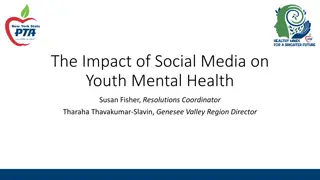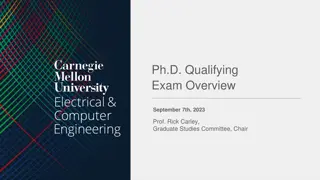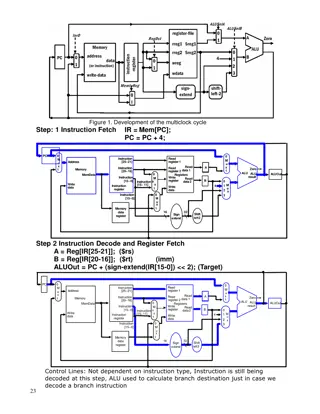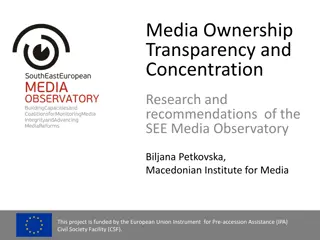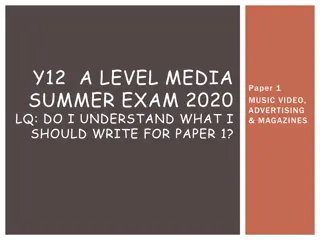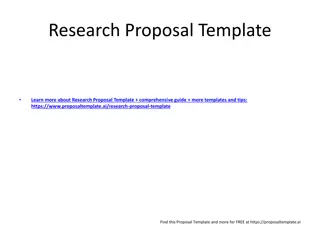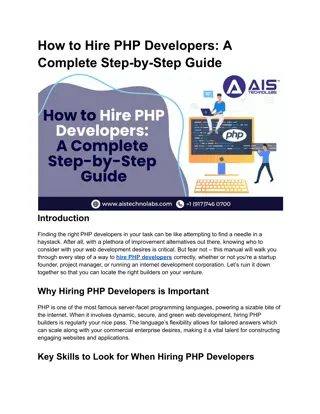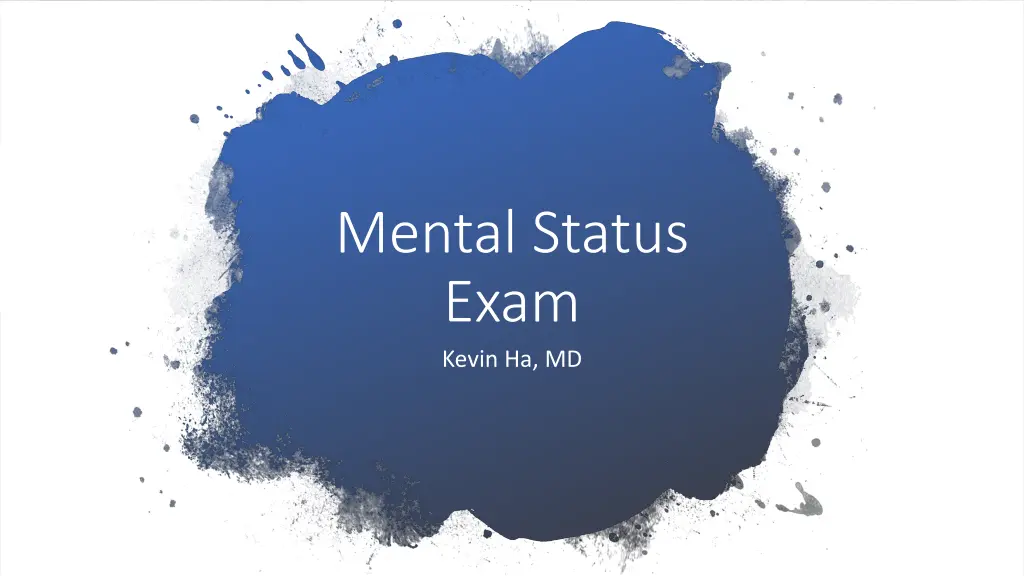
Understanding Components of the Mental Status Exam
Explore the key components of the Mental Status Exam (MSE) including appearance, behavior, speech, mood, affect, sensorium, memory, intellectual function, thought process, and more. Learn how to assess and interpret various aspects of a patient's mental health to provide effective care.
Download Presentation

Please find below an Image/Link to download the presentation.
The content on the website is provided AS IS for your information and personal use only. It may not be sold, licensed, or shared on other websites without obtaining consent from the author. If you encounter any issues during the download, it is possible that the publisher has removed the file from their server.
You are allowed to download the files provided on this website for personal or commercial use, subject to the condition that they are used lawfully. All files are the property of their respective owners.
The content on the website is provided AS IS for your information and personal use only. It may not be sold, licensed, or shared on other websites without obtaining consent from the author.
E N D
Presentation Transcript
Mental Status Exam Kevin Ha, MD
Components of the MSE A M S I T Appearance, Behavior, Speech Mood, Affect, Labile Sensorium: A/O, Memory Intellectual Function Thought process: Coherent? Logical? Goal-Directed? Thought Content: Perceptions, delusions, SI/HI/AVH Abstract Thinking Insight/Judgement
Appearance Clothing: casual, formal, dirty vs clean, torn, stained Important to understand tx (e.g. well-dressed psychotic pt probably has a stronger social system than otherwise) Grooming: cleanliness, make-up/hair, dentition Body Habitus: Important when considering SE of Meds Scars/Injuries: Questionable self-harm or history of it? Current location Odor Track Marks
Examples of how to present appearance 1. Casually dressed, fair and appropriate grooming, well-healing scar on L forearm. 2. Obese woman in a wheelchair missing left leg below the knee 3. Lying in hospital bed in hospital gown, intubated with five-point restraints
Behavior Calm and cooperative? Irritable/Impatient/angry? Level of agitation? Is pt falling asleep during the interview? Psychomotor agitation or retardation Changes to thought and physical movement Can involve slowing/rapid of physical and emotional reactions includes speech and affect Any motor tics present? Any tremors? Eye Contact: intense, appropriate, looks down, avoids Gait
Behavior: Psychomotor Agitation: pacing around a room, uncontrolled tongue movement, wringing hand, ripping/tearing DDx: ADHD, manic pt, anxious pt, pt who are high on stimulants Retardation: slowing down thought, reduction of physical movements DDx: MDD
Behavior: Tremors Resting Tremor Pill-rolling seen in Parkinson Dz See with rigidity, bradykinesia, postural instability Improved by Action Mgmt = dopaminergic agents Action Tremor Essential (very fine) worse with voluntary mvmt, improved w/ EtOH, BBlocker Physiologic (very fine) worse with stress Intention tremor (coarse) often 2/2 lesion (stroke, trauma, MS), will zigzag toward target. Will have abnl accompanying neuro exam (e.g. ataxia, hypotonia, Gait instability, etc)
Speech Rate: speed Fast: stimulant use Pressured (hard to interrupt): mania Slow: MDD, Parkinson Rhythm: prosody (rhyme) and slurring, latency Volume: Normal, soft, loud? Content: any aphasias, perseveration (repeat self), echolalia?
Mood In quotes of what the patient says
Affect What do you observe in terms of the general state? Radio station Dysphoric (sad) vs Euthymic (neutral) vs Euphoric (happy) Anxious? Irritable? Excited? Annoyed? Frustrated What do you observe in terms of the range? Volume Blunted = diminished emotional expression more severe than restrict/constricted Restricted = Decrease in range Constricted = Stuck in one affect Normal range: smiles at jokes, cries wen have sad though Labile = varies out of proportion to conversation Flat = pathognomonic for schizophrenia (neg sx), severe parkinsonism Note pt just has flat affect can t say they have a dysphoric flat affect Is it congruent with their mood or appropriate to the conversation?
Thought Process Normal Though Process (linear and logical): A/B/C Tangential: Wanders around and never comes back (A/B) Circumstantial: Takes awhile but gets to the point (A/B/~~C) Loosing of associations: string of loosely related things (~A/~B) Flight of Ideas: string of unconnected things Clanging: Rhyming stuff Word Salad: Bunch of random things
Thought Content Hallucinations: Stimuli that isn t actually there Visual? Auditory? Tactile? Illusions: Misinterpretation of sights/sounds (thinking radio static is a voice) Delusions: Fixed, false beliefs that are not too outlandish Control: outside forces control actions Erotic Grandiose: Inflated sense of power, wealth, self-worth Somatic: pt thinks they have a physical defect Reference: unrelated events apply to them Persecutory: others trying to cause harm Thought insertion (your thoughts aren t your own), thought broadcasting (others read your mind) Paranoia Thought blocking: you can t finish your own thoughts HI/SI
Cognition Dementia: Executive function? Planning/visuospatial skills Language Memory Recognition Coordination Delirium Attention level (wax/waning?) Disorientation Things can test: Recall (3 things: short, immediate, long), serial 7s, Mini-Cog vs MOCA Assess memory, orientation, level of attention Orientation to time/place/person Memory Very short-term: immediate registration (repeat back immediately a series of three objects) -> warm pt they will be asked again in 3-5minutes Short-term : recall of words 3-5 minutes later Long-Term : recall events past several days as well as more remote information Attention: name five things that start with the letter D
Abstract Thinking Interpretation of proverbs Don t cry over spilled milk OR ask pt to describe how an apple and an orange are alike
Insight Awareness of your situation or condition Do they understand their medical condition? Do you believe that you are mentally ill? or Do you believe you need tx? Do they understand the social and psychological contributions to their condition? Recognize signs and sx as part of their dz?
Judgment Can the individual understand the consequences/risks of their behavior and thus make decisions to address that for themselves and others


